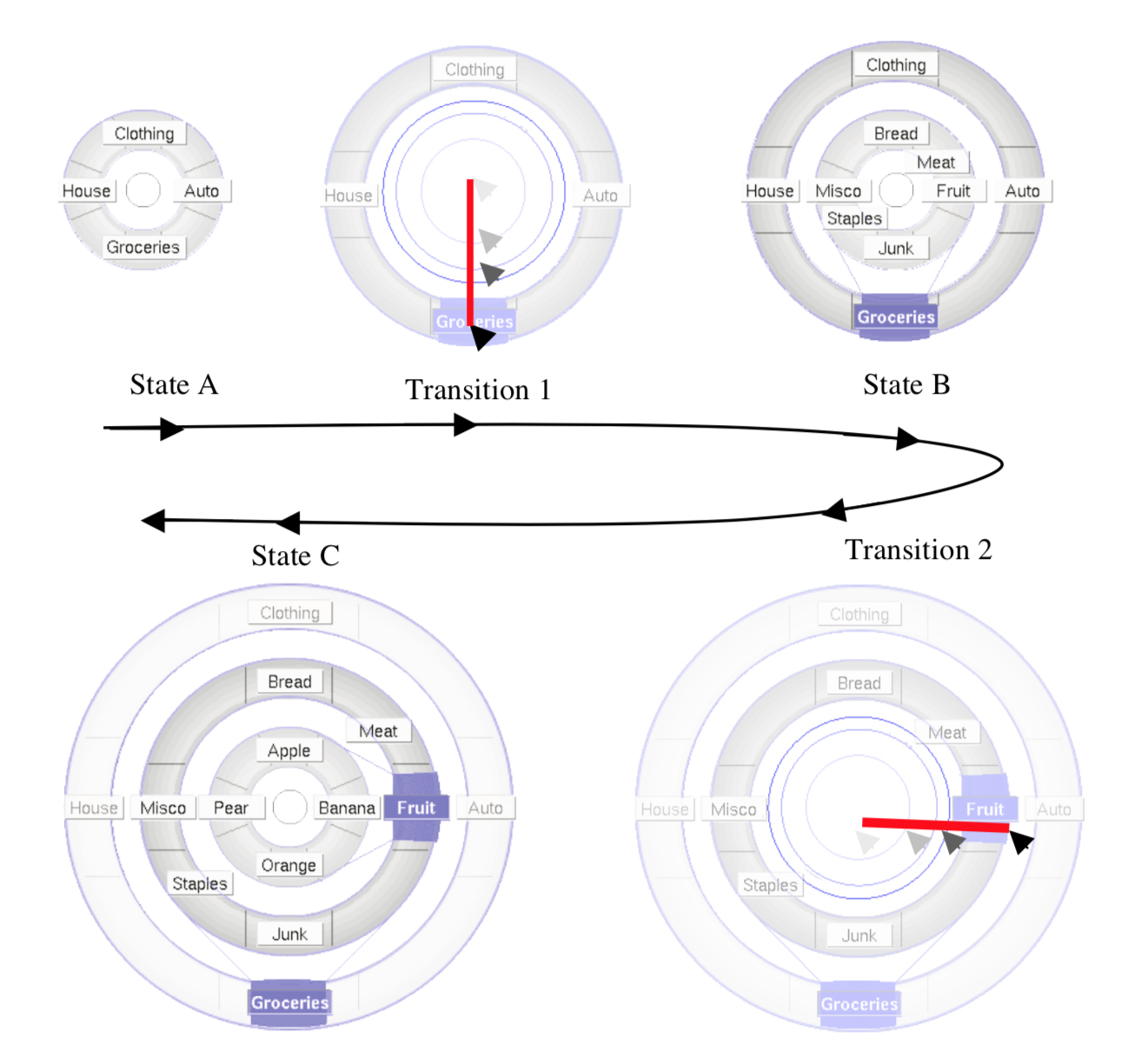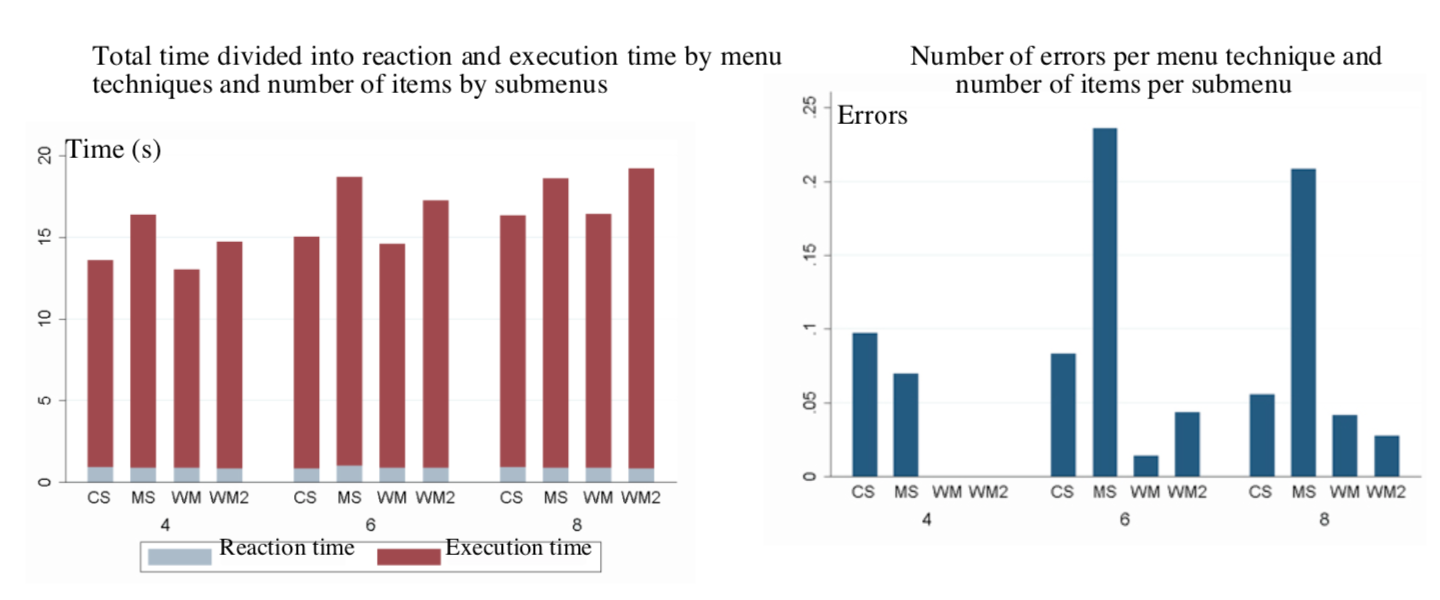Wave Menus
Validation level: 4. Other peer-reviewed paper publication
We present Wave menus, a variant of multi-stroke marking menus designed for improving the novice mode of marking while preserving their efficiency in the expert mode of marking. Focusing on the novice mode, a criteria-based analysis of existing marking menus motivates the design of Wave menus.
Publications
Also featured in
Storyboard of Functions

(State A) The menu appears centered around the cursor. By drawing a stroke towards a desired item (Transition 1), the first level menu is enlarged to leave room for the submenu (State B). With a second stroke (Transition 2), the third level appears at the center and the first and second levels are enlarged (State C).
Evaluation

Highlights:
The wave menu provides the previsualization of submenu items and path visualization. Users can open submenus without releasing the mouse button. Menus start being expanded when the cursor crosses an item border of the inmost menu. Also, the user can interact with all visible items by clicking or dragging the mouse on them. This makes it possible to explore different branches without closing menus and to previsualize submenus.
Limitations:
The experiment in the study only focuses on the mouse use, thus the applicability of wave menu in other scenarios is not validated. Moreover, the study did not compare the wave menu.